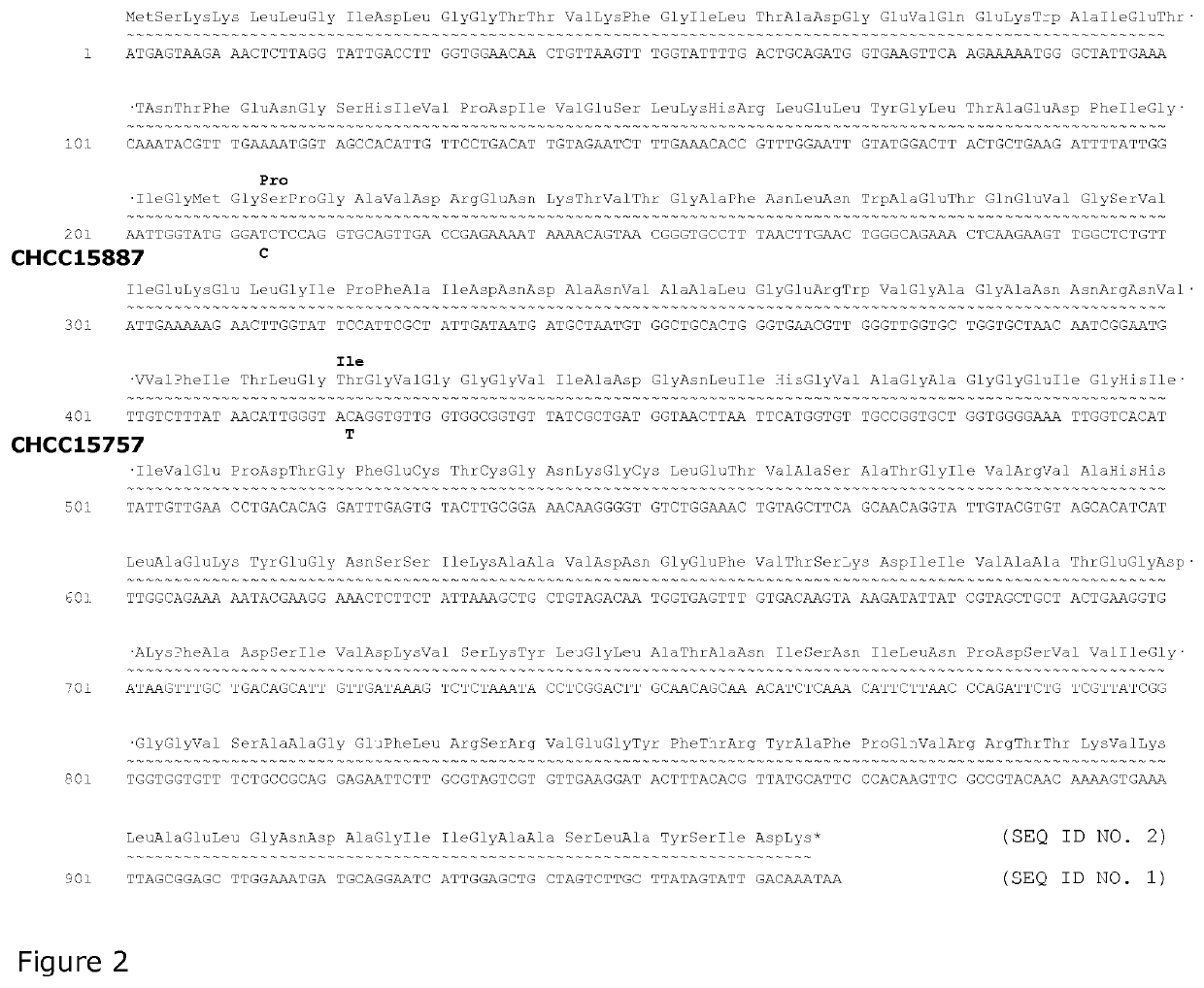Use of lactic acid bacteria for preparing fermented food products with increased natural sweetness
a technology fermented food products, which is applied in the field of lactic acid bacteria strains and cultures with sweetening properties, can solve the problems of not contributing to the fulfillment of requirements, unsuitable inclusion in a commercial starter culture, and none of the above approaches can solve the problem, so as to boost the growth of bifidobacterium animalis subsp
- Summary
- Abstract
- Description
- Claims
- Application Information
AI Technical Summary
Benefits of technology
Problems solved by technology
Method used
Image
Examples
example 1
Use of 2-Deoxyglucose to Isolate Glucose Kinase Mutants of Streptococcus thermophilus with Enhanced Excretion of Glucose
[0229]In order to isolate mutants of Streptococcus thermophilus strain CHCC11976 and of Streptococcus thermophilus strain CHCC14994, cells derived from the growth of a single colony were inoculated into 10 ml of M17 broth containing 2% lactose and grown overnight at 40° C.
[0230]Next day, the strains were plated in serial dilutions on M17 agar plates containing 2% galactose and a concentration of 2-deoxyglucose of either 20 mM (CHCC14994) or 30 mM (CHCC11976) and incubated for 20 hours at 40° C. Resistant colonies were at first re-streaked on the same type of agar plates as they were selected. Survivors were used to inoculate fresh M17 broth containing either 2% lactose, 2% galactose or 2% glucose and growth was measured.
[0231]From this, a number of mutants that ware able to grow faster on galactose than on glucose were identified as outlined in Example 2. Two such ...
example 2
2-Deoxyglucose Resistance Mutant Growth Pattern
[0232]To ensure the selection of 2-deoxyglucose resistant mutants that can grow on galactose, two strains that were selected from a galactose-fermenting strain collection were used. While these galactose-fermenting strains still grow at least 10% faster in exponential phase in M17 broth+2% glucose than in M17 broth+2% galactose, the 2-deoxyglucosc resistant mutant derivates of CHCC11976 and CHCC14994, such as CHCC15757 and CHCC15887, on the other hand, are characterized by growing faster in exponential phase In M17 broth+2% galactose than in M17 broth+2% glucose.
[0233]Growth in exponential phase is herein measured as the development in optical density of the exponentially growing culture at 600 nanometers (OD600) with time at 40° C.
[0234]As known by the skilled person, it may vary from species to species when the culture is in exponential growth. The skilled person will know how to determine the growth in exponential phase, e.g. between...
example 3
Mutation Analysis Assay of the Gene Encoding Glucose Kinase
[0238]Total DNA was isolated from the mutants identified in Example 1 to perform mutation analysis assay of the gene encoding glucose kinase. Sequencing of the glucose kinase gene revealed that the gene in CHCC15757 contains a non-conserved mutation in codon 141 generating an isoleucine instead of a threonine codon. Sequencing of the gene from mutant CHCC15887 revealed a mutation in codon 72 resulting in a non-conserved amino acid change from serine to proline (FIG. 2)
[0239]The 2-deoxyglucose resistant strains complying to the conditions specified in Examples 1 and 2 and isolated as described in Example 1 are characterized by having a mutation in the gene encoding glucose kinase (glcK). The mutation can result in an amino acid change of the encoded enzyme or result in generation of a stop codon which will truncate the encoded enzyme.
[0240]To reveal the mutation in the glcK gene, the specific strain of interest is grown in th...
PUM
| Property | Measurement | Unit |
|---|---|---|
| concentration | aaaaa | aaaaa |
| pH | aaaaa | aaaaa |
| concentration | aaaaa | aaaaa |
Abstract
Description
Claims
Application Information
 Login to View More
Login to View More - R&D
- Intellectual Property
- Life Sciences
- Materials
- Tech Scout
- Unparalleled Data Quality
- Higher Quality Content
- 60% Fewer Hallucinations
Browse by: Latest US Patents, China's latest patents, Technical Efficacy Thesaurus, Application Domain, Technology Topic, Popular Technical Reports.
© 2025 PatSnap. All rights reserved.Legal|Privacy policy|Modern Slavery Act Transparency Statement|Sitemap|About US| Contact US: help@patsnap.com



